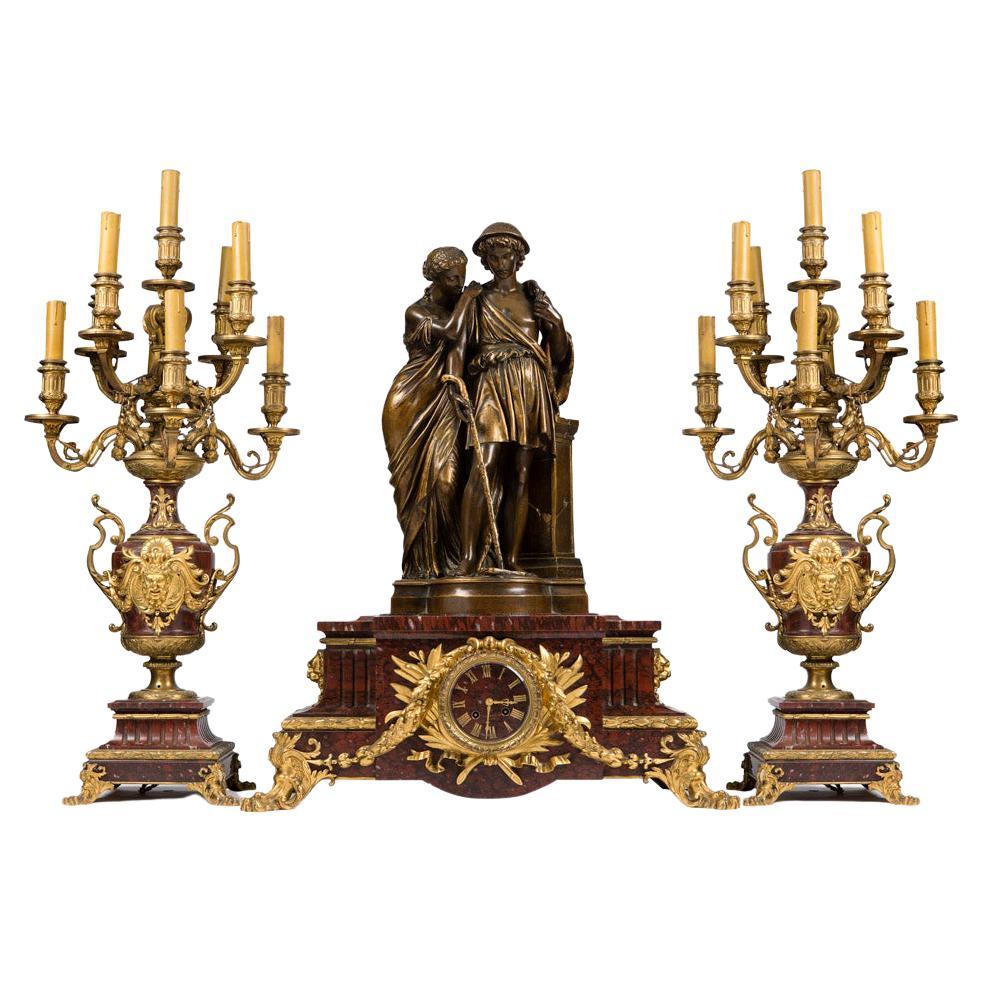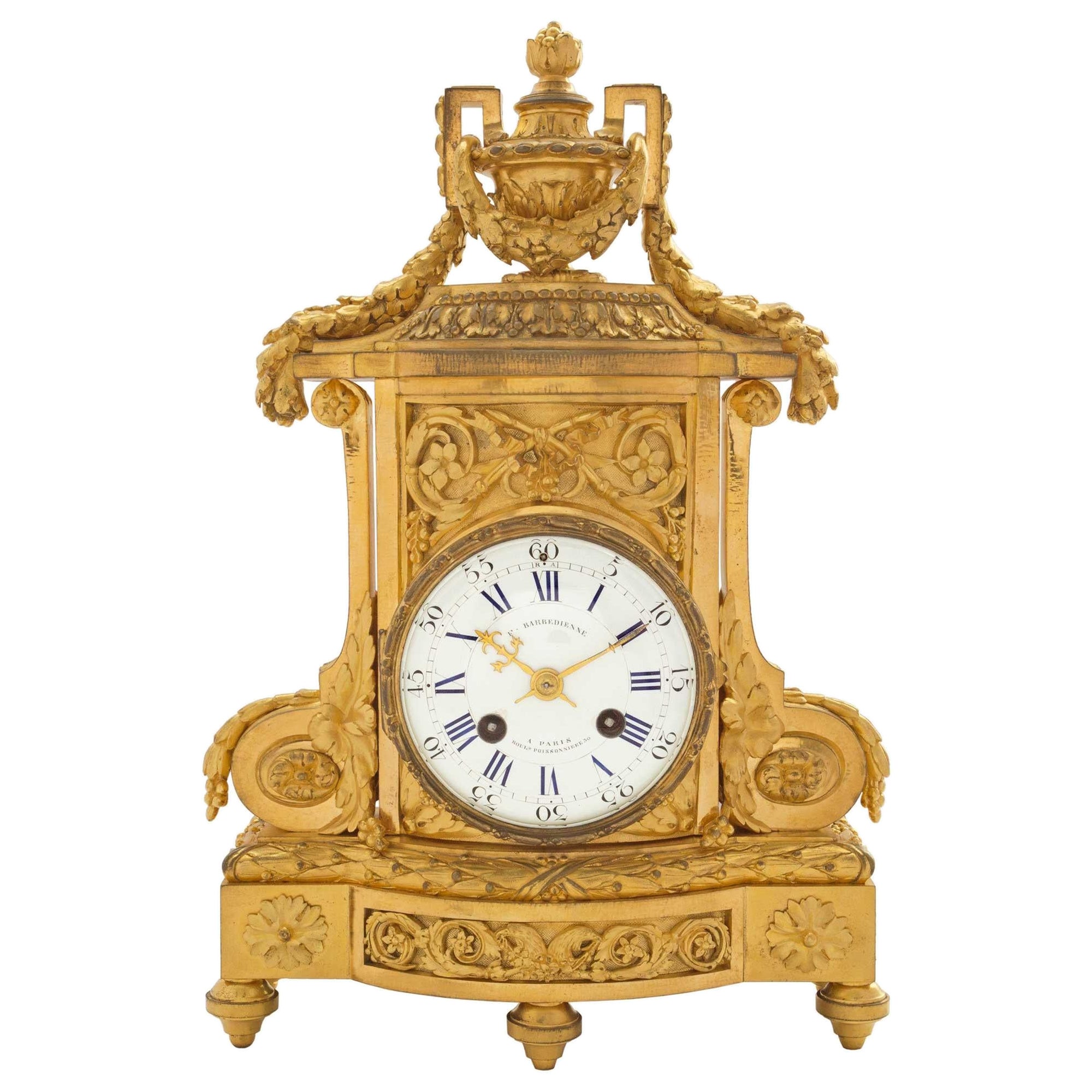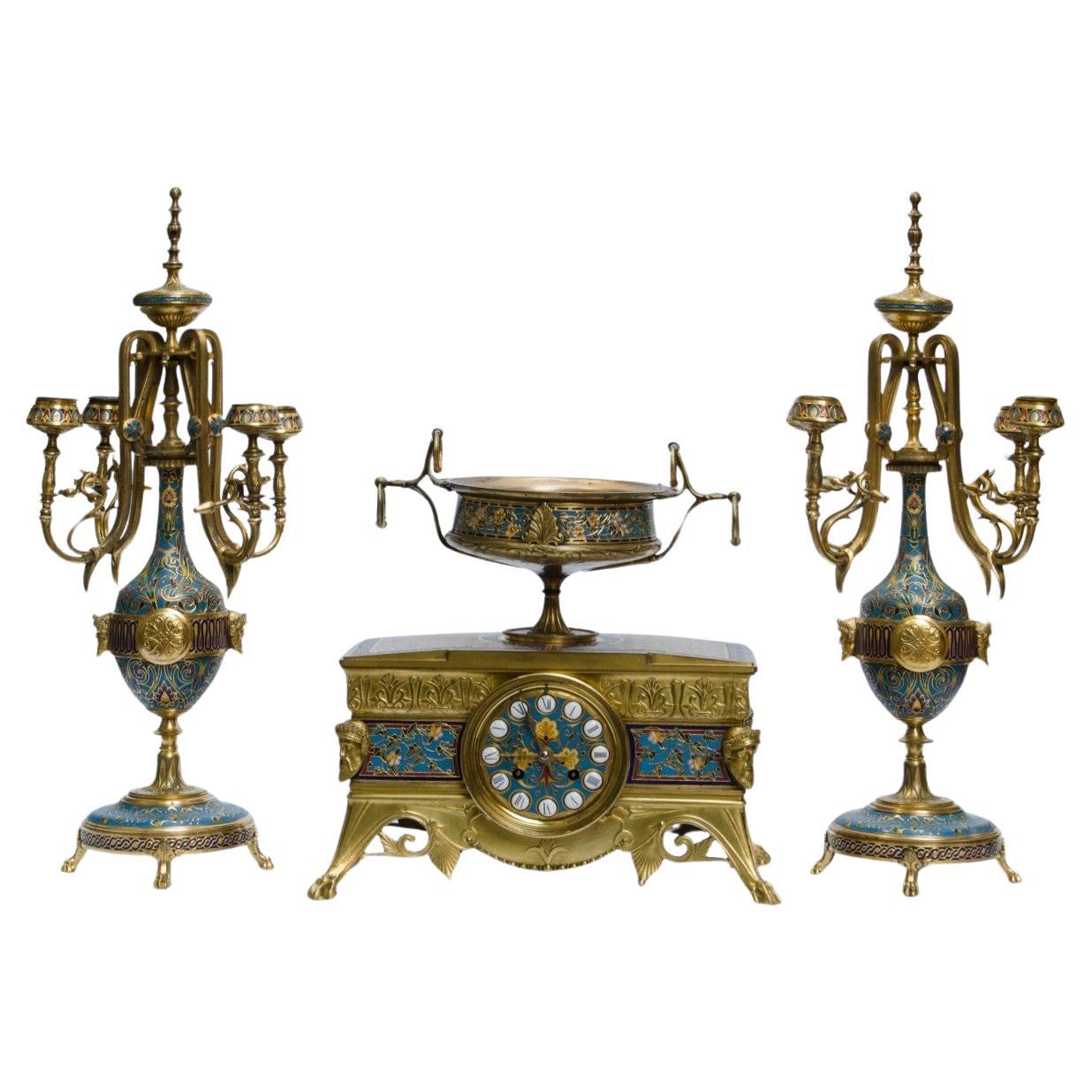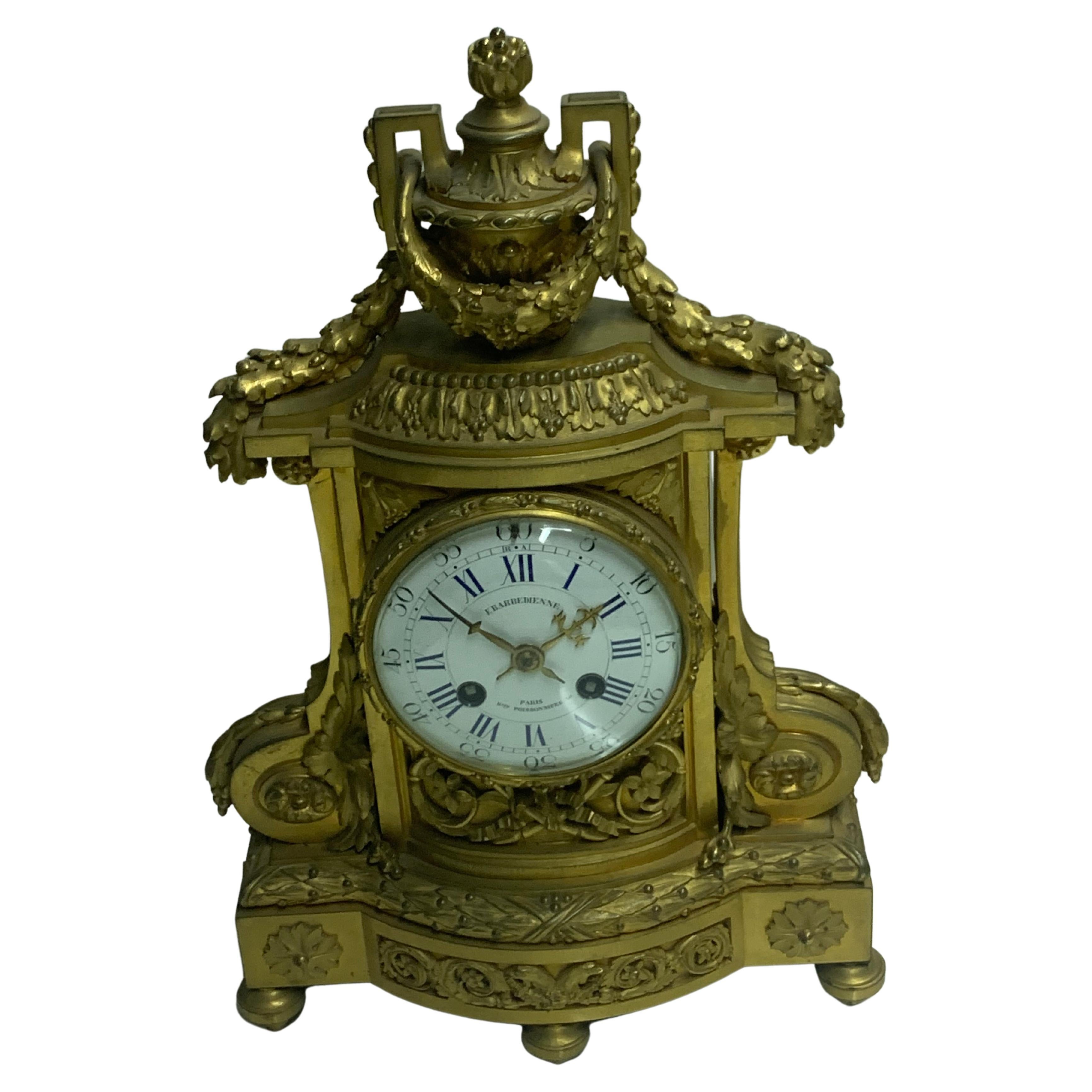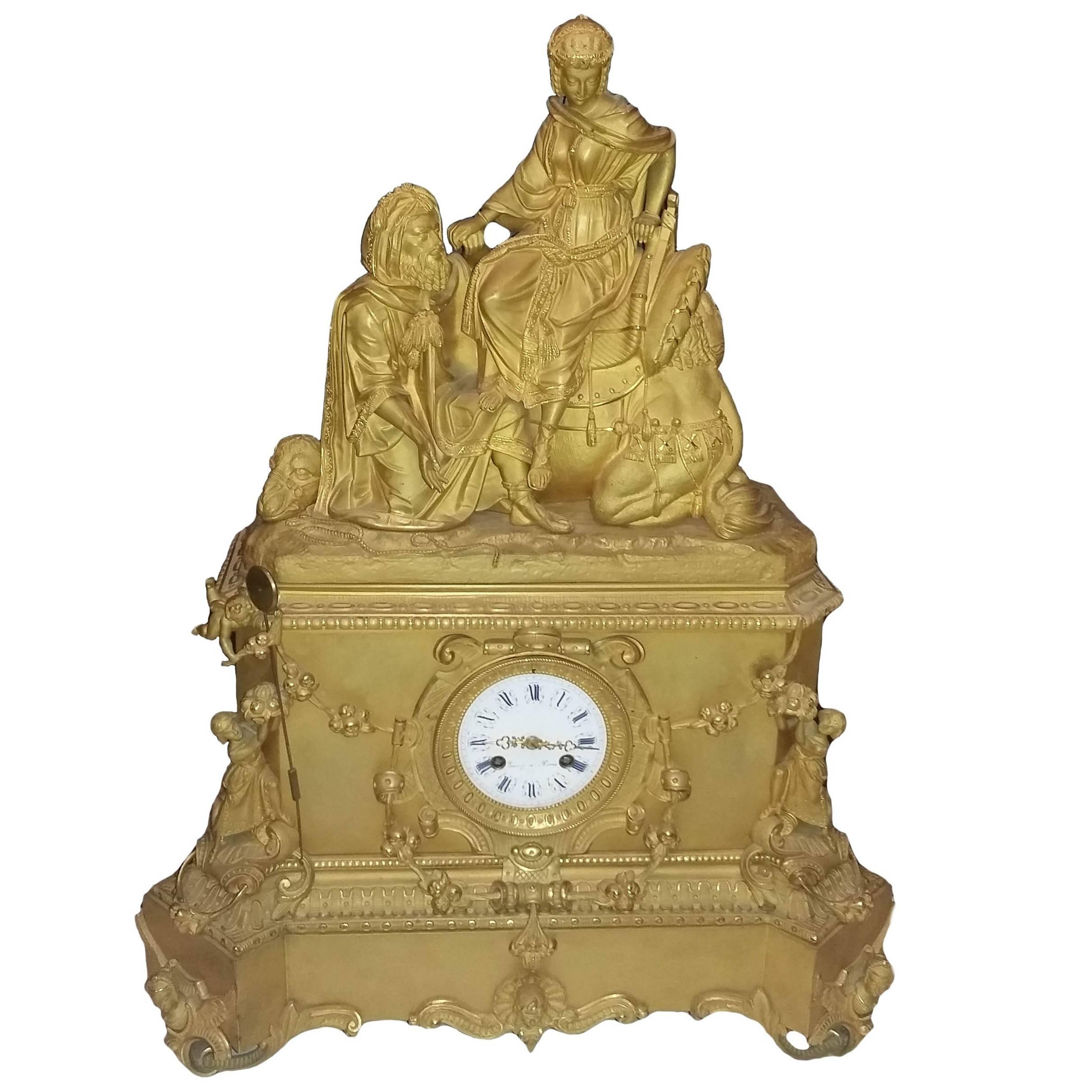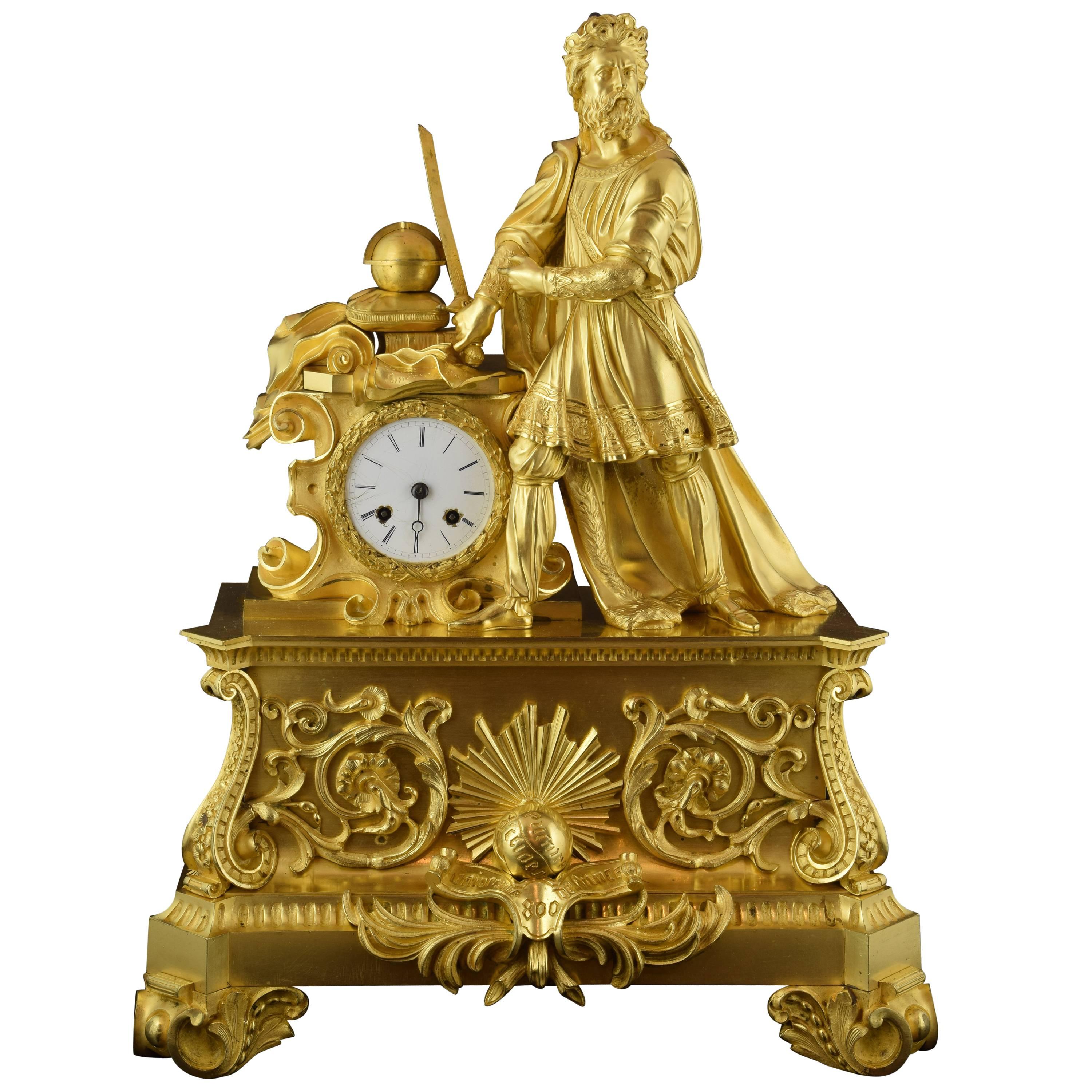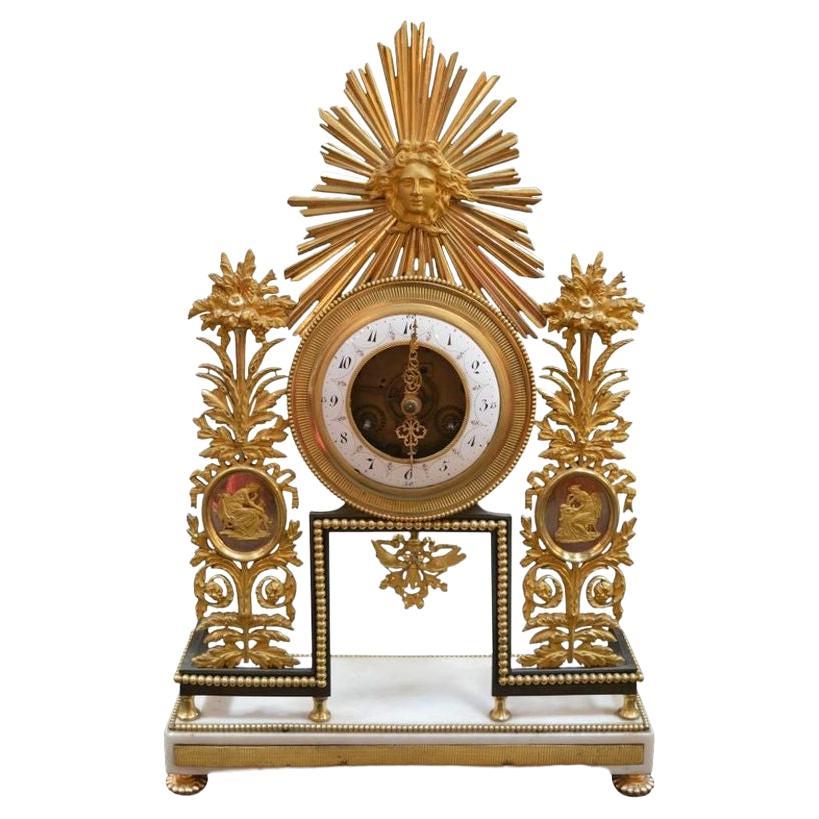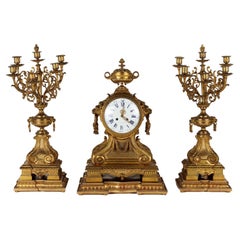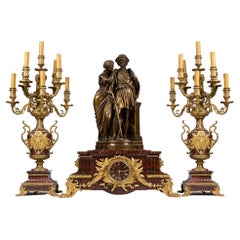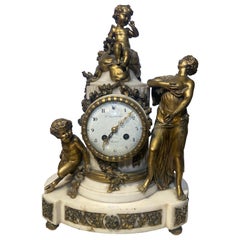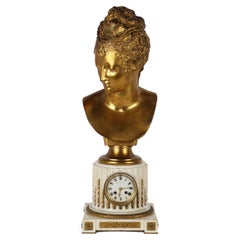
Table Clock Ferdinand Barbedienne, 19th Century
View Similar Items
Want more images or videos?
Request additional images or videos from the seller
1 of 13
Table Clock Ferdinand Barbedienne, 19th Century
About the Item
- Creator:Ferdinand Barbedienne (Maker)
- Dimensions:Height: 30.71 in (78 cm)Width: 10.24 in (26 cm)Depth: 10.24 in (26 cm)
- Style:Other (Of the Period)
- Materials and Techniques:
- Place of Origin:
- Period:
- Date of Manufacture:1800s
- Condition:Wear consistent with age and use. mechanism not tested.
- Seller Location:Milano, IT
- Reference Number:1stDibs: LU1721226868862
About the Seller
4.9
Gold Seller
These expertly vetted sellers are highly rated and consistently exceed customer expectations.
Established in 2015
1stDibs seller since 2015
356 sales on 1stDibs
Typical response time: 1 hour
More From This SellerView All
- Table Clock in Gilded Bronze, France, First Half of the 19th CenturyLocated in Milano, ITGilded and chiseled bronze clock. On the large rectangular base there is a scene with mythological divinities in relief on a finely chiseled background. Decorations with plant motifs...Category
Antique Early 19th Century French Other Table Clocks and Desk Clocks
MaterialsBronze
- Vase Clock France First Quarter 19th CenturyBy Non-Standard Furniture and LightingLocated in Milano, ITGilt bronze vase clock resting on a plinth decorated with successive leaf motifs resting on four ball feet. The characteristically bi-vaned vase-shaped body is adorned with finely ch...Category
Antique 1820s French Empire Mantel Clocks
MaterialsBronze
- Triptych Clock G. Philippe Palais Royal, 66-67, XIXth centuryLocated in Milano, ITTriptych clock in gilded and chiseled bronze with carved and gilded wooden bases. The clock with a large rectangular base features finely worked burin d...Category
Antique 19th Century French Other Mantel Clocks
MaterialsBronze
- Goblet Eclectic Ferdinand Barbedienne Alabaster Bronze, Paris, 1800Located in Milano, ITAlabaster goblet held by a gilded bronze support with an enameled decoration realized with the champleve technique. The base is shaped as an upside down goblet and holds a circular b...Category
Antique 19th Century French Other Decorative Bowls
MaterialsAlabaster, Bronze, Enamel
$2,875 Sale Price20% Off - Tower Clock, Phippard Jappened Long Case George II Period '1730-1760'Located in Milano, ITTower clock lacquered with gilded and polichromed chinoiserie on a green lacquer background. The tunk is painted with scenes of landscapes with pagodas surrounded by garden where the...Category
Antique 16th Century British George II Grandfather Clocks and Longcase C...
MaterialsWood
- Lombard-Venetian Extensible Table Walnut, Italy, 19th CenturyLocated in Milano, ITLombard-Venetian extensible table supported by four refined walnut legs that originally had wheels. Walnut veneered top surface with olive edges and d...Category
Antique 19th Century Italian Other Tables
MaterialsCherry, Maple, Olive, Walnut, Fir
$3,676 Sale Price25% Off
You May Also Like
- 19th Century Bronze Three Piece Garniture Clock Set by BarbedienneBy Ferdinand BarbedienneLocated in Los Angeles, CAUnusual monumental clock set in Griotte marble signed Barbedienne and on the top of the clock you have a bronze made by one of the famous bronze m...Category
Antique Late 19th Century French Napoleon III Mantel Clocks
MaterialsGriotte Marble, Bronze, Ormolu
$57,600 Sale Price / set20% Off - French 19th Century Louis XVI St. Ormolu Clock Signed F. BarbedienneBy Ferdinand BarbedienneLocated in West Palm Beach, FLA very elegant and richly chased 19th century French Louis XVI st. ormolu clock signed F. Barbedienne. The clock is raised by five toupee shaped feet. At the frieze are two rosettes encompassing a Rinceau design below the berried laurel band. Above is the original beveled curved glass door and enameled dial. The pediment is decorated with acanthus leaves. At the top is the urn of prosperity with a finial draped by a laurel leaf garland...Category
Antique 19th Century French Louis XVI Mantel Clocks
MaterialsOrmolu
- 19th Century Rare French Mantel Clock by F. Barbedienne with Bronze FiguresBy Ferdinand BarbedienneLocated in Sofia, BGFrench mantel clock by Ferdinand Barbedienne consisting of a terminal clock in the form of a fluted column in white marble and de...Category
Antique Mid-19th Century French Mantel Clocks
MaterialsMarble, Bronze
- 19th Century Barbedienne French Champleve Enamel and Gilt bronze clock setBy Ferdinand BarbedienneLocated in Autonomous City Buenos Aires, CABA19th Century Barbedienne French Champleve Enamel and Gilt bronze clock set A fine 19th Century French three piece clock garniture set. Comprising of a clock and pair of candelabra, ...Category
Antique 19th Century French Napoleon III Mantel Clocks
MaterialsBronze, Enamel
- Ferdinand Barbedienne " Diana" Sculpture, 19th CenturyBy Ferdinand BarbedienneLocated in Madrid, ES"Diane de Gabies" French sculpture, late 19th century. Patinated bronze with "Ferdinand Barbedienne" foundry marks. Height: 51 cm. Very good condition.Category
Antique 19th Century French Baroque Figurative Sculptures
MaterialsBronze
$2,309 Sale Price20% Off - Mantel Clock 19th Century Styl Empire by Ferdinand Berthoud À ParisLocated in Warsaw, PLOrmolu bronze mantel clock flanked by a troubadour and musical instruments, signed 'Ferdinand Berthoud a Paris'. The end of the 18th and beginning of the 19th century was a crucial time in which new technological advances helped to make watches more accurate and more portable. During the 1790s, the production of gilded bronze increased considerably as working conditions improved. The freedom of trade initiated by the French Revolution allowed many casters to develop large factories. The new factory environment gave them a chance to execute all stages of bronze work including drawing, casting, gilding, assembly, and trade of art objects. While the bronzers took creative liberty in creating all kinds of clocks in contrast to the noble and rigorous structure carried by the movement of neoclassicism. Under the reign of Empire, the case designs started gradually to develop away from a proportionate and strict classicism towards a baroque style and revival style. The rediscovery of medieval civilization was one of the intellectual curiosities of the beginning of the 19th century, with much input from the Ancien Régime and its institutions, rites and the medieval churches in which family ceremonies occurred. This early nineteenth-century figural mantel clock is surmounted by a medieval musician. To be more precise, it is a french troubadour. Troubadours were known for composing and performing lyric poetry for the nobility back during medieval times. The clock is featuring a chiselled bronze troubadour, dressed in medieval fashion while holding a flute, playing a tune from sheet music called "Du Troubadour" that is resting on top of the rectangular clock case. In addition to that, the clock features a gilt bronze lute or vielle resting on a small stool on the opposite side of the clock’s case. The white enamel dial features the inscription Berthoud and is underlined by a bronze entourage chiselled with palmette motif, plus encompassed by c-scrolls and wreaths. The original hands are in blued steel and encircled by Roman numerals indicating hour next to Arabic numerals indicating minutes. The small details that adorn the hexagonal plinth are reliefs, depicting two water fountains or basins on both sides with a lyre in between. The sculpted image of a lyre raised above the background features also foliage garlands tied on top with ribbons. The clock rests on seven spinning feet. The clock was made in the well-known workshop of the Berthoud’s family that was recognized for their excellent work by the King. Berthoud Clockmakers History. Ferdinand Berthoud was a horologist and author of extensive treatises on timekeeping as well as a Swiss clockmaker serving the king of France, that produced many marine clocks, including a weight-driven version that inspired the first American sea-going clock. He was born in Plancemont, Switzerland, the son of an architect and judiciary. In 1741 he began a three-year apprenticeship as a clockmaker under his brother, Jean-Henri. He made his first marine chronometer in 1754 (sent for trial in 1761) and in 1764 was appointed a member of the Royal Society, London and Horloger Mécanicien de Sa Majesté et de la Marine ayant l'inspection de la construction des Horloges Marines. In 1769, Ferdinand Berthoud sent for his nephew Pierre-Louis Berthoud (1754–1813), commonly known as Louis Berthoud, a talented young watchmaker and clockmaker, inviting him to come to Paris from Couvet, Switzerland, to pursue his apprenticeship. Louis helped Ferdinand manufacture and repair the sea clocks...Category
Antique Late 18th Century French Louis XVI Mantel Clocks
MaterialsBronze
Recently Viewed
View AllMore Ways To Browse
Cartel Boulle 1860
Manning Bowman Clock
Fusee Pagoda Clock
Antiques Clocks Bronce
Zenith Desk Clock
Alarm Clock Glow
All David Marshall Clocks
Ansonia Shelf Clock
Antique Lighthouse Clock
Cifra 5 Clock
Circadian Clock By Michel Fleury
Copal Flip Clock
Deco Waltham Clock
E Ingraham Antique Clocks
Henri Houdebine On Sale
Hermes Porthole
Kienzle Clocks On Sale
Kienzle Zodiac
